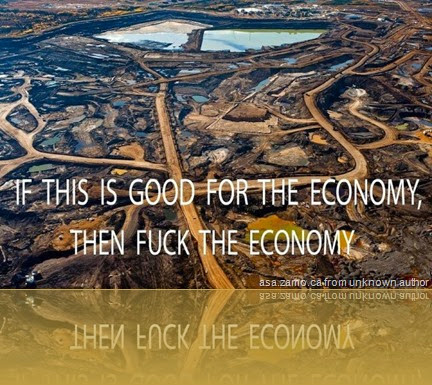I recently read a longer article on Bloomberg about Romania and its lagging infrastructure - more specifically, roads and highways. Much to my surprise, all that I was reading on other blogs (or hearing from my relatives) was described and explained as facts. (blmbrg-cows)
 To cut right to the chase, what Romania has to show is a society similar to what USA was in the 50s or Western Europe was in the 60s, in terms of people, attitudes and, to some extent, standard of living (except, of course, for the parts where the US standard of living was superior to what it is today). It’s a secret many of the foreign expats living in Bucharest are not keen on sharing.
To cut right to the chase, what Romania has to show is a society similar to what USA was in the 50s or Western Europe was in the 60s, in terms of people, attitudes and, to some extent, standard of living (except, of course, for the parts where the US standard of living was superior to what it is today). It’s a secret many of the foreign expats living in Bucharest are not keen on sharing.
Let’s start with the Bloomberg article; more precisely, the various interviews.
- truck-driver: “The roads are still awful,” Melcescu said in an interview during a mandatory break near Bucharest. “And when we reach the Hungarian border, we lose another four to six hours standing in 15-kilometer queues.”
- “European transport corridors come to a dead-end in Romania and together with the poor quality of internal roads it clearly restricts the country’s growth potential,” said Dan Bucsa, a London-based economist at UniCredit Bank AG. “Romania has by far the worst road infrastructure in the EU and has lost big investments because of this in the past few years.”
- The government has only built about 150 kilometers (90 miles) of new highways since [losing Daimler to Hungary], leaving motorway density at 2 kilometers per 1,000 square kilometers, the lowest level in the EU, according to the European Commission. Another 200 kilometers are under construction, held up by a lengthy approval process, delays in awarding contracts and challenges to tenders. About 40 percent of national roads in the EU’s seventh-largest nation are made of stone or dirt. Romania has about 6 billion euros ($7.6 billion) of EU funds for infrastructure investments until 2020. “Highways must be considered quietly and we always must take into account the money at our disposal, otherwise they are just erotic dreams that don’t come true,” Transport Minister Ioan Rus said in an interview with Digi TV channel on Aug. 1.
- Since joining the EU in 2007, Romania’s gross domestic product per capita has risen 64 percent to $9,500, World Bank data show. In the 10 years Poland and the Czech Republic have been members, it’s more than doubled to $13,450 and $18,900. Romania’s economy grew 3.3 percent last year, with net exports accounting for 42 percent. To narrow the gap to western European countries and help meet its euro-adoption goal, Romania must almost double its pace of growth, Peter Sanfey, deputy director of the European Bank for Reconstruction and Development’s office of the chief economist, said by e-mail. “Romania will join the euro area when we have a highway crossing the Carpathian mountains,” central bank Governor Mugur Isarescu said Aug. 6.
The one quote that stuck with me comes toward the end:
“It’s just mind-boggling that we’re incapable of building roads,” said Mihai Bogza, head of Romania’s independent Foreign Investors Council. “With the EU funds available it remains an enigma. An investor will never choose a country that replaces curbs on sidewalks each year rather than building a highway.” Romania’s Transport Ministry only managed to use 1 billion euros of EU money in the past four years, during which time Poland has channeled 10 times more cash from the bloc into roads. “Poland should be a benchmark for Romania,” said Chrisophe de Korver, head of the Romanian unit of Gefco SA, which secures transport services for exporters including Dacia-Renault and Ford Motor Co. (F) “With better infrastructure, Romania can really become an important transit hub to the east and to the Black Sea.”
The bad roads did not seem to phase Jens, whom I interviewed not long ago, quite possibly because he had come to expect it.
And when I looked closely, I’ve discovered that idea (sidewalk curbs) also repeated in bl-borduri.
one of the questions we were asked over the course of the evening was ‘What does Bucharest pride itself on?’
We were stumped. We ended up mumbling something all a bit perfunctory (and unimaginative) about the sheer size of Casa Poporului as well as the fact that Bucharest is still a very safe city compared with any number of other places we could mention – not least in England – but we could tell that nobody was entirely happy with the answer.
It was only in the taxi on the way home that the definitive answer to the question became all rather obvious: kerbstones. Bucharest has the most amazingly well-kept kerbstones in Europe, if not the world.
It seems that over-replacing kerbstones is either a very enduring meme, or simply the truth. (Incidentally, it is also what AlphaDog mentioned in his “Why NOT Basescu” guest post, under anticorruption.)
I wrote extensively on the subject of road traffic, so much so that there’s a distinct category, “trafic”, dedicated to this – see it at the bottom of the page. Here are my thoughts, to be developed later:
- An extensive road network is a mark of the 20th century. Increasingly, countries restrict and tax road traffic. As such, emphasizing road traffic at the expense of rail or other kinds of traffic is probably a bad idea. Infrastructure investment is a good idea but infrastructure does not have to mean only roads.
- Romania had a very poor road infrastructure because of low car ownership and because it had above average rail and air networks. While car ownership has exploded (as it was to be expected), for reasons I do not fully understand (compatibility with commerce partners?), the rail network was allowed to decay to the point of non-functionality, and there are no signs it will ever be revived and/or upgraded. It is also possible that moving lots of goods via rail was easier to do in a “command and control” economy than in a market economy.
- Our friend (who came up with the kerbstones idea) was in the company of older people, who might have difficulties understanding that Bucharest is a party city.
- Romania can and should “sell” itself as an organic farmland oasis. I just spoke to a German student here in Canada who came on a work-visa and stayed one year. She worked everywhere, but her best experience was on a farm, where she worked for food and shelter, mostly as a volunteer. As a comparison, there only 35 farms listed on wwoof Romania and around 1000 on WWOOF Canada.
- Obviously, changing kerbstones is easier than building roads. Citizens should penalize mayors and councillors who bill the taxpayer for unnecessary work. Why is it that everybody talks about it but nobody does the work required to pin it down onto the mayor or city councillor who approved it?
To conclude, I’m sort of as half-hearted about road building as I am about gold mining in Romania, for similar reasons – see the putrid cadaver of Romanian transportation.
Going back to how we started, Vice has already done a piece on Bucharest. Direct quotes:
- Bucharest is a true party city. It’s a place where you can smoke indoors, a bottle of vodka costs a quarter of what it does back home and where the closing time is whenever the last person passes out.
- Bucharest, like techno music and McDonald’s, is best enjoyed on drugs. The city is a nonsensical architectural stew, so many people say there’s no better way to get a feel for it than roaming the streets at night.
- Weed is sold per gram and prices are between 50-60 RON (€11-13). We weren’t kidding about the police, Romanian dealers are really panicky about undercover cops and no-one tends to do anything stupid like sparking up in public unless being kicked half to death in a Romanian prison is their idea of a Kodak moment. Drugs like MDMA and speed are a regular part of the scene at Bucharest’s ravier venues. A gram of MDMA goes for as much as 300 RON (€66) while speed is less than half that and a pill tends to cost about 50 RON (€11).
Branding and selling Romania is not easy, whether by the pound, by the logo or in Euro(trash)s.
Sources / More info: blmbrg-cows, bl-borduri, za-farming, wwoof:ro,ca
Aici vei găsi ştiri inedite, articole hazoase, perspective originale in politică, societate, economie şi relaţii interumane. QUESTIONS (Intrebări)? We got Answers (Răspunsuri există)!














